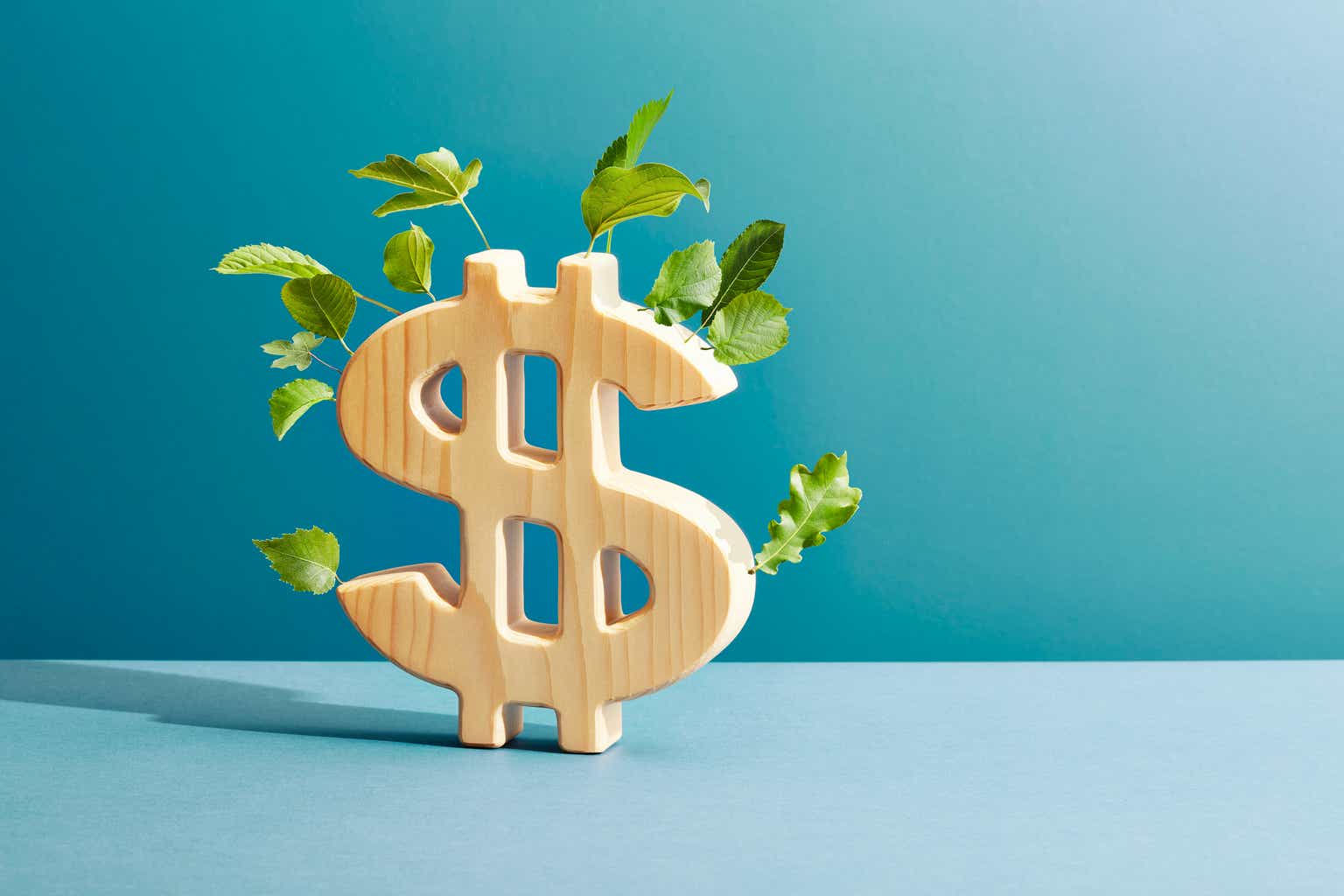Listen below or on the go on Apple Podcasts and Spotify
Steven Cress, head of Quantitative Strategy at Seeking Alpha, discusses the best dividend stocks for when the markets are sliding (0:25). Focusing on dividend growth and safety not high yields, and why dividend stocks are still attractive when money market yields are so high (3:40). This is an abridged conversation from Seeking Alpha’s recent Investing Experts podcast.
Transcript
Kim Khan: So, Steve, you got a new article out for us that came out on dividends. It’s called Dive Into Dividends: 14 Must-Have Stocks When Markets Dip and looking overall at the market landscape, we’ve got this big sovereign bond sell off that’s starting to impact stocks, it’s starting to impact corporate credit. We’ve also got high oil prices.
So, I kind of wanted to ask you how companies are looking at with respect to dividends? What we’re seeing in the markets right now?
Steve Cress: Well, I have to say, I wrote the article because I actually like the market now. I like this October period. With tradition, people know that when you get into sort of the September, October period, markets tend to cut-off. And this year has not let us down.
Since mid-July, we’ve seen markets come off, and it seems to be picking up steam. I’m not sure if we’re at capitulation yet. There could be a little bit more to go. But for me, it’s ideal to picking up stocks here, as well as dividend stocks, because the dividend stocks have come off as well.
Basically, what I’m seeing is, there are investors who are currently chasing high dividend yield stocks, and I do want to put a warning out there that chasing high dividend yield stocks could be an increased risk.
Now as much as I like buying the market at these levels, you definitely have to be leery based on what the economic environment is and companies that do have higher yields. A higher yield is often a sign that a stock price is suffering due to poor investment fundamentals. And when you have a market such as ours and an economy such as ours, you definitely have to have your ears and eyes open to the potential risks that are out there.
Some companies are impacted in a high interest rate environment by slowing economic growth, higher cost, rising debt levels. And by example, a business that had a loan at maybe 3.5% two years ago may now find that they need to finance at 9%. And that may be cost prohibitive. So if a company does pay a dividend and they’re in that situation, certainly they could be at risk. For businesses that face pressure in this environment, it could lead them to slash dividends or take profits.
So I do want to reiterate, despite me liking this environment to purchase stocks at this level, chasing high yields instead of dividend growth can be dangerous. When it’s an outlier, it’s usually an indication that there’s a problem.
Case in point, I want to highlight a diversified REIT, WP Carey, ticker symbol (WPC), they announced that they slashed their dividend, and they did it at the end of a 24-year growth streak. An additional example of a company that — companies that have suspended or cut their dividends were V.F. Corporation, ticker symbol (VFC); Newell Brands, ticker symbol (NWL), and Advance Auto Parts, (AAP).
And when I look at AAP, they knew that they had to put money back into the company and they couldn’t afford to be paying out that dividend. So they made a right decision for the company, but you have to look at the economic environment that we’re in and the impact it’s going to have in these companies. So when yields go high, you have to be careful.
The way we look at it is we want to focus on dividend growth and dividend safety. So we have back tested a number of our metrics for dividend growth and dividend safety going back to 2010 and when you look at our dividend grades, there’s a lot that you could take away in terms of feeling comfortable with the metrics that we use.
So by example going back to 2010, we found that 99% of dividend cuts were averted if you owned a stock with a dividend safety grade of A+ to A-. 98% of dividend cuts were reverted by owning stocks with a dividend safety grade of A+, B-. So pretty much anything north of B-, you’re in pretty safe territory according to the metrics that we have.
Now with that in mind, 93% of all stocks that cut their dividend had a dividend safety grade of C+ or lower. So basically C+ to F, we found when a company cut their dividend, it stood at that 93% level. And more recently, 67% of all stocks that had a dividend safety grade of F, cut their dividend.
And if we looked at the pandemic period, around August 2020, 51% of all stocks that had a dividend safety grade of F had cut their dividend over the next 12 calendar months. So this dividend safety grades should really provide people with a high level of comfort that they’re going to own a stock where that dividend won’t be cut. So, my focus is really on finding companies that offer dividend growth and dividend safety, not chasing yields.
KK: If I’m an individual investor and I am wondering what dividend stocks to look out for, I’m also asking myself why am I looking at dividend stocks when I’ve got a Fed funds rate north of 5% that I could put money in a money market account or looking at these kind of 16 year highs on longer-term treasuries that have a lot of safety.
Why do I put my money in a dividend stock at this time?
SC: Great question. So dividend stocks, they can be stable and reliable. They often can have strong yields. They have a significant dividend growth rate, which is really important. And it helps inflate, and it insulates the company from inflationary pressures, potential portfolio losses, and market volatility. So, when you’re in companies that have that combination, strong yields and growth rates, it helps protect from the downside that the rest of the market could be suffering.
So right now, by example, since mid-July, the Nasdaq is off about 8%, the S&P is off about 7.5%. If you look at the number of the stocks that we’re recommending, they have been hit, but when you take a look at how much the stock prices have been off, as well as the dividend yields that they have, it lessens the pain of what’s happening.
And certainly there’s the capital appreciation potential too for the company based on what their business is, what sector they’re in. It could be a growth area that’s just pulling back with market sentiment. You’re not going to get the capital appreciation out of, like, 10 year bonds or 5 year treasuries that you could out of a stock.
KK: Exactly. And people should note that things can get lost in all these headlines and all these sell-offs. But overall, this is a seasonally good period for stocks.
SC: To be buying stocks, yeah, that’s why I like — this is actually a good season. I like the season. This is when stocks go — they’re basically discounted. And I’ll mention too on the 14 stocks that we’re recommending, the average yield is 3.94%. So that’s pretty substantial.
If you look at the S&P 500 (SPY), the yield on that is about 1.52%. And if you look at the Vanguard Dividend Appreciation Index (VIG), the yield on that is only 2%. So the average yield on the stocks that we’re recommending here stand at 3.94%, and they’re all Quant strong buys. So even if you stripped out the yield, we like these stocks for their potential capital appreciation.
KK: Yeah. I mean, we’ve also got to look at what the market’s predicting for the Fed. We’re bouncing around a 50-50 chance for December 0.25 point hike still. That’s still in play. And I guess, obviously, people are still positioning for that.
I’m going to give you one last word on dividends before we wrap things up on, you know, the one takeaway you think for our listeners.
SC: Like I said, the markets have pulled back. I think, when you have yields popping up on stocks, and you can find companies that have really strong fundamentals, as well as good dividend safety metrics, good dividend growth metrics, those are the stocks that you want to target.
Don’t chase after the monster yields. Those could really get you in trouble because the high yields are often an indicator of risk. So what you want to focus on is dividend growth, dividend safety, and try to find the dividend yield that’s, you know, a bit above the market, and it’s a win-win situation.
Read the full article here













Leave a Reply